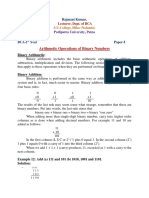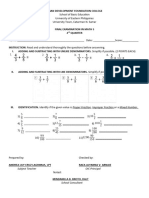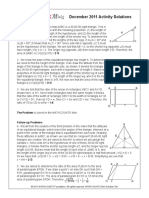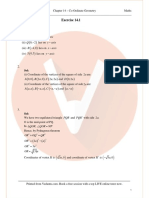0% found this document useful (0 votes)
38 views6 pagesComprog1 - Module 4
1) The document provides instructions for performing binary arithmetic operations including addition, subtraction, multiplication, and division.
2) Binary addition and subtraction are performed similar to decimal, by aligning the numbers and carrying or borrowing.
3) Binary multiplication follows three rules: 0x0=0, 0x1=0, 1x1=1.
4) Binary division compares the divisor to the dividend bit-by-bit, adding bits to the dividend until the divisor is smaller.
Uploaded by
emmanuel simCopyright
© © All Rights Reserved
We take content rights seriously. If you suspect this is your content, claim it here.
Available Formats
Download as DOCX, PDF, TXT or read online on Scribd
0% found this document useful (0 votes)
38 views6 pagesComprog1 - Module 4
1) The document provides instructions for performing binary arithmetic operations including addition, subtraction, multiplication, and division.
2) Binary addition and subtraction are performed similar to decimal, by aligning the numbers and carrying or borrowing.
3) Binary multiplication follows three rules: 0x0=0, 0x1=0, 1x1=1.
4) Binary division compares the divisor to the dividend bit-by-bit, adding bits to the dividend until the divisor is smaller.
Uploaded by
emmanuel simCopyright
© © All Rights Reserved
We take content rights seriously. If you suspect this is your content, claim it here.
Available Formats
Download as DOCX, PDF, TXT or read online on Scribd
/ 6





















































































